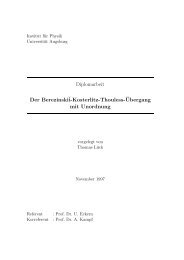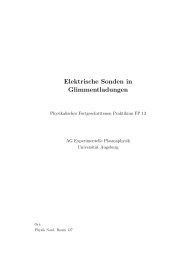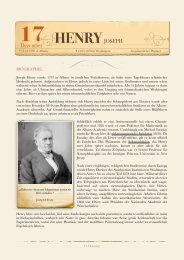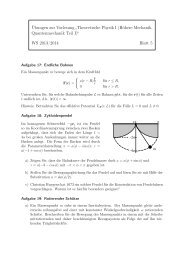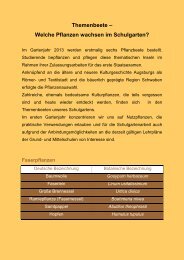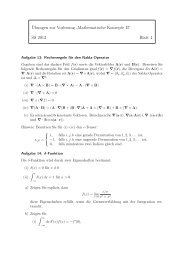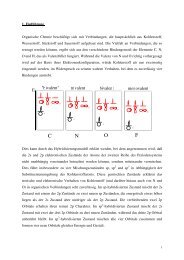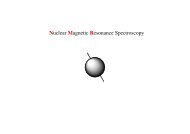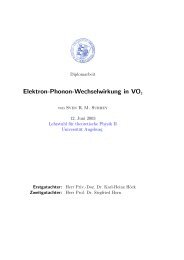Driven Quantum Systems - Institut für Physik
Driven Quantum Systems - Institut für Physik
Driven Quantum Systems - Institut für Physik
Create successful ePaper yourself
Turn your PDF publications into a flip-book with our unique Google optimized e-Paper software.
268 <strong>Driven</strong> <strong>Quantum</strong> <strong>Systems</strong><br />
relations in (5.88), which in this case are exact. In particular, the transition probability<br />
W 1→2 (t) =|〈2|Ψ(t)〉| 2 = |a 2 (t)| 2 = |b 2 (t)| 2 = |c 2 (t)| 2 obeys<br />
( )<br />
W 1→2 (t) = 4λ2 1<br />
Ω 2 sin2 2 Ωt . (5.105)<br />
At resonance, δ =0,ω=ω 0 , it assumes with Ω 2 =4λ 2 its maximal value. We also<br />
note that the quasienergies are given by the — in this case exact — result in (5.96).<br />
5.4.3 <strong>Quantum</strong> systems driven by circularly polarized fields<br />
The fact that the time evolution of a TLS in a circularly polarized field can be factorized<br />
in terms of a time-independent Hamiltonian in (5.103) is surprising. We note that this<br />
factorization involves a rotation around the z-axis,<br />
|a(t)〉 −→ |b(t)〉 =exp(−iS z ωt/¯h)|a(t)〉. (5.106)<br />
This feature can be generalized to any higher-dimensional system, such as a magnetic<br />
system or a general quantum system that can be brought into the structure which, in<br />
a representation where J z is diagonal, is of the form<br />
H(t) =H 0 (J 2 )+H 1 (J z )−4λ[J x cos ωt − J y sin ωt]. (5.107)<br />
Here, H 0 (J 2 ) contains all interactions that are rotationally invariant (Coulomb interactions,<br />
spin-spin and spin-orbit interactions). Setting R(t) ≡ exp(−iJ z ωt/¯h) and upon<br />
observing that<br />
R(t)J x R(t) −1 = J x cos ωt + J y sin ωt,<br />
R(t)J y R(t) −1 = −J x sin ωt + J y cos ωt,<br />
R(t)J z R(t) −1 = J z , (5.108)<br />
one finds upon substituting (5.108) into (5.107)<br />
H˜ (t) ≡ R(t)H(t)R −1 (t) =H 0 (J 2 )+H 1 (J z )−4λJ x . (5.109)<br />
Hence, the transformed Hamiltonian becomes independent of time. With the propagator<br />
obeying<br />
∂<br />
∂t K(t, t 0)=− ī h H(t)K(t, t 0)<br />
= − ī h R−1 (t)H˜ R(t)K(t, t 0 ),<br />
we find from<br />
∂<br />
∂t [R(t)K(t, t 0)R −1 (t 0 )] = − ī h Ĥ[R(t)K(t, t 0)R −1 (t 0 )] (5.110)



